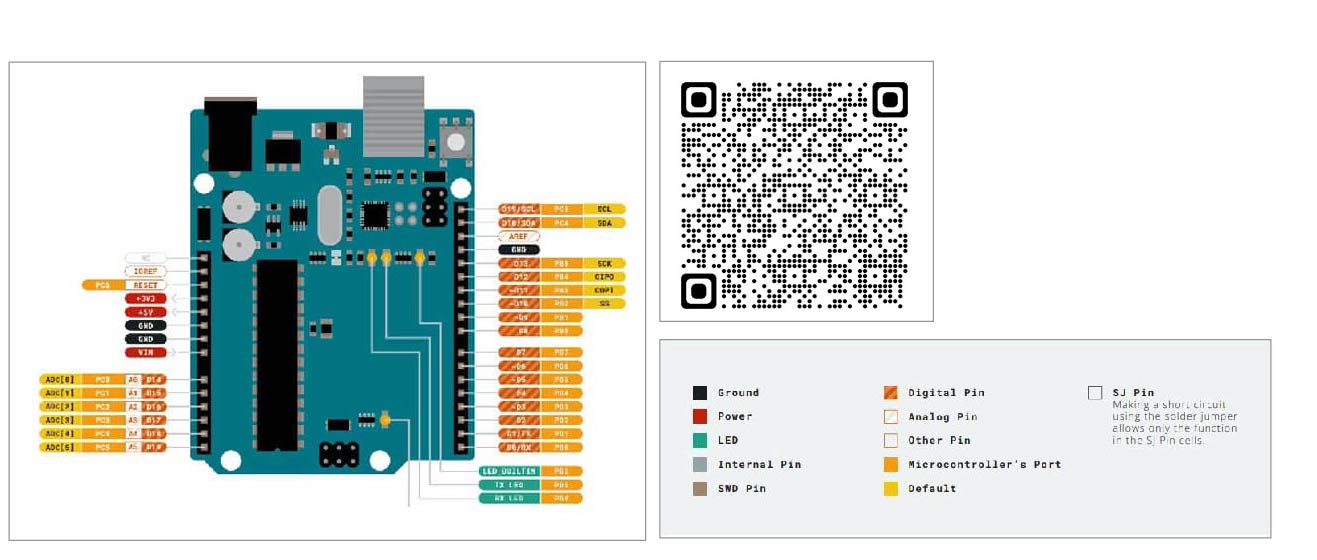Arduino UNO
A little bit of history that no on ask for
The Uno and version 1.0 will be the reference versions of Arduino, moving forward. The Uno is the latest in a series of USB Arduino boards, and the reference model for the Arduino platform.The things that you HAVE TO KNOW(to not explote you things)
| Digital Input/Output Pins | Analog Input Pins | Input Voltage (recommended) | Input Voltage (limits) | Operating Voltage | DC Current per I/O Pin | DC Current for 3.3V Pin |
|---|---|---|---|---|---|---|
| 14 of which 6 provide PWM output(Pulse wide modulation) | 6 | 7-12V | 6-20V | 5V | 40 mA | 50 mA |

Pinout Arduino Diagram
All the information that you have from the Microcontroller its crutial to make actions and take decisions about it, for example, if you do not take some of the features that I mention, probably is not going to work what you been working on
Also the memory and that stuff are important, the Arduino Nano has a Flash Memory of 32 KB (ATmega328), but you can have a lot of questions (like me, I guess?)

Arduino web editor Arduino IDE
For simulate the circuit I've also try whit Wokwi
-
Test 1/ THE BLINK: Integrated led
-
Test 2/ THE BLINK: Resistor + Led
Components
Codes
TEST 1
void setup() {
pinMode(LED_BUILTIN, OUTPUT);
}
void loop() {
digitalWrite(LED_BUILTIN, LOW);
delay(200);
digitalWrite(LED_BUILTIN, HIGH);
delay(1000);
}
Problems: Mostly these tests are quite simple (in theory) because I wanted the integrated light of the Arduino to be the one that turns on and I just needed to change the values, as well as, do the same action with an LED connected to the Arduino but one has to pay attention to the Pin where it is connected (important), read the code and what things you really want the Arduino to do.
It can't guess. It needs some instruction.
Comments
At first, this test didn't work for me cause I didn't take care of which Pin I have to connect, I mean... the leds leg sizes
If the short leg (aka the negative)
If the long leg (aka the positive)
Also I didn't know about the voltage values of every color pin and the diferents types of resistors, so below I add some information about
 More about resistors
More about resistors